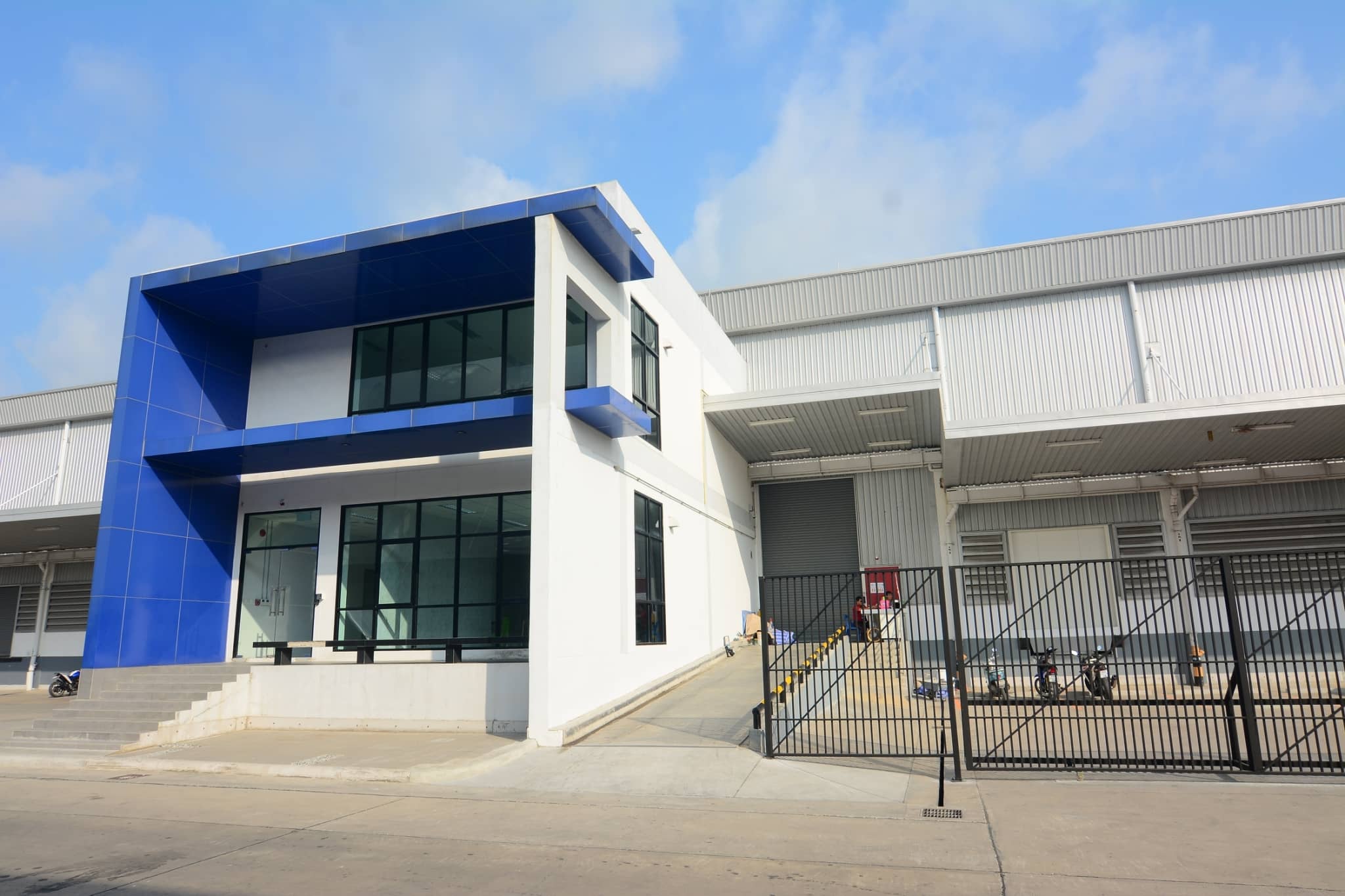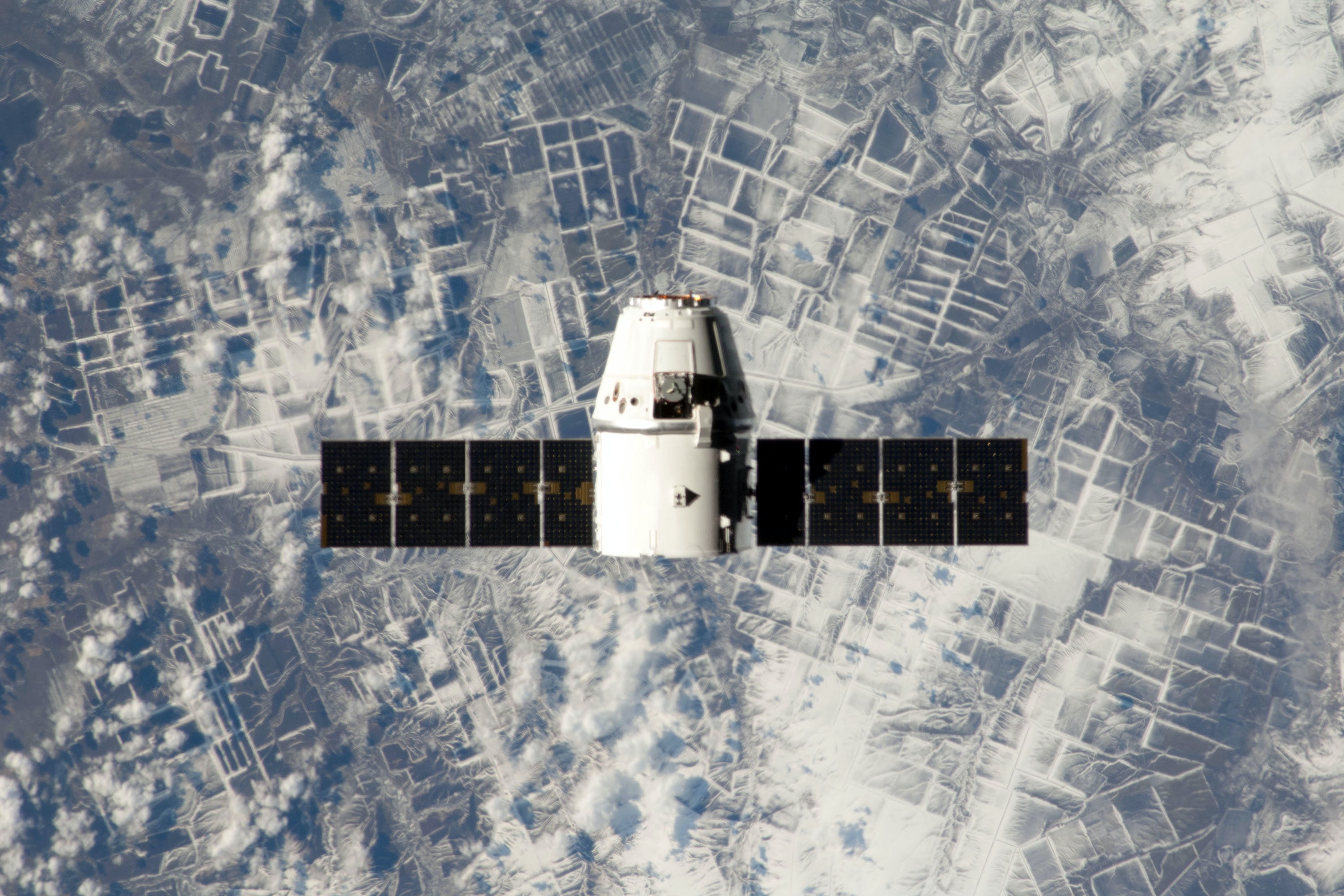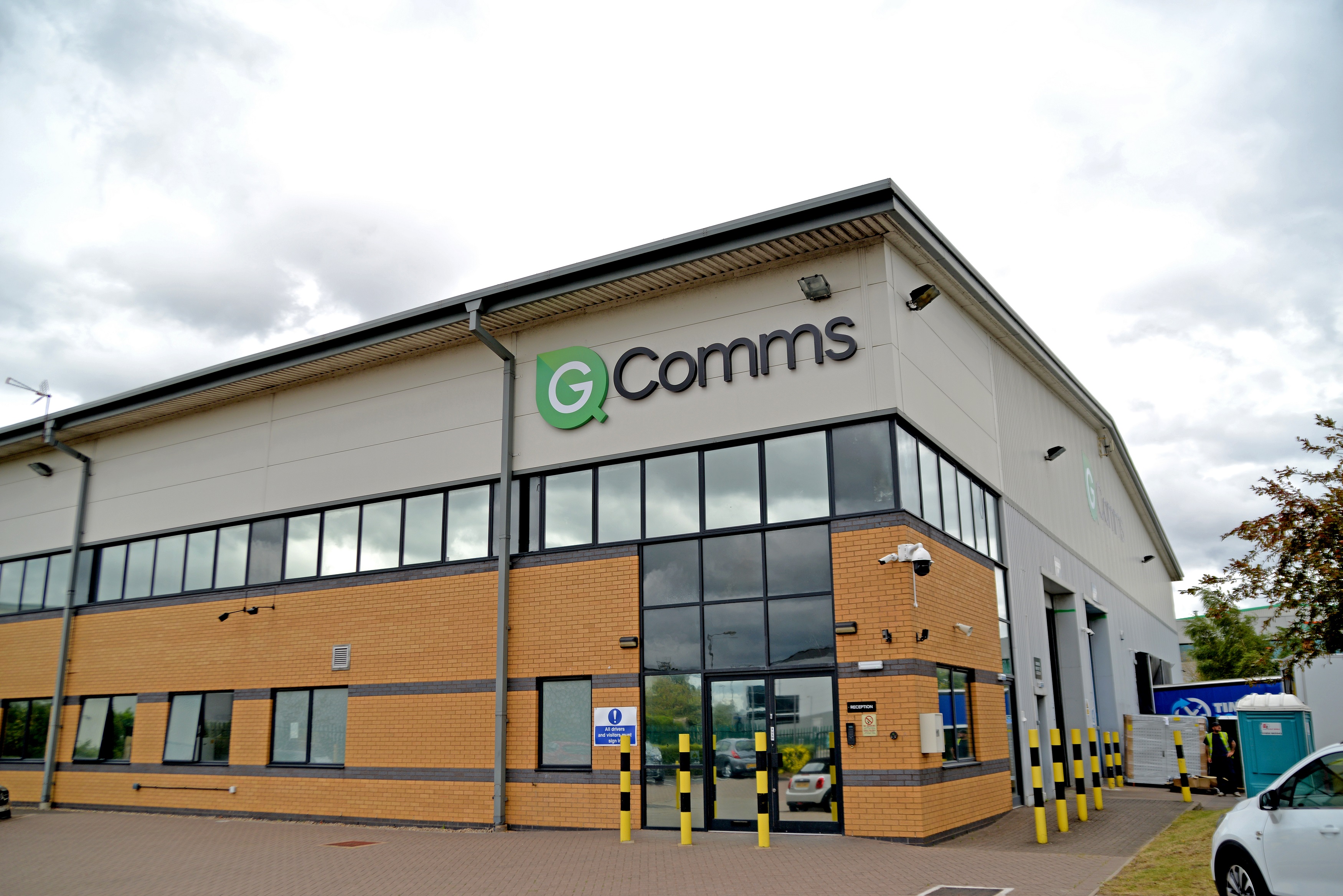Telecoms
Data Centres
Infrastructure
Projects
Telecoms
ETIX Everywhere launches new data centre campus in Bangkok
ETIX Everywhere has acquired a 67% interest in Genesis data centre, in Bang Chalong, 30km from Bangkok's historical centre. This data centre will form the basis of a new data centre campus which will be jointly developed with its local partner Interlink Telecom.
The Genesis data centre, renamed ETIX Bangkok #1, is already live with 2.4 MW of IT power and the future development of the campus will offer significant additional capacity. This data centre campus is the first in the market offering such high level of redundancy with four diverse routes for fiber access and power supply coming from two distinct substations.
Louis Blanchot, Group CEO ETIX Everywhere comments: “We are very excited to announce our expansion into Asia starting with this acquisition in Bangkok, one of the most dynamic market in the zone. This first step in Asia is a major milestone in ETIX’s strategy to support our global customers providing them our best-in-class colocation services wherever they need”.
Nuttanai Anuntarumporn, CEO of Interlink Telecom PLC comments: “We are very pleased to have a strong partner like ETIX Everywhere with experience in this industry. We believe that our partnership will support the booming Southeast Asia data centre and cloud industry and lead us to a common success.”
With a large population and a strong internet penetration, Thailand is an important growth market for the public cloud and OTT service providers. They need to bring their data as close as possible to the end users in order to deliver a better service which will drive demand for colocation services.
“Our customers are world leading cloud and content service providers; they have very strict colocation requirements, and it has been difficult for them to find a data centre that can match with their standards in Thailand - with enough capacity for expansion. We are very proud to finally offer them an answer to their needs", says Pierre Patris, CEO Asia of ETIX Everywhere.
“ETIX Everywhere has big ambitions in Southeast Asia, first with this campus in Bangkok, and we are also very active in data centre opportunities in Vietnam and the Philippines.”
Beatrice - 24 January 2022
Cloud
Internet
Networking
Telecoms
WAN
Aryaka Releases 6th Annual State of the WAN Report
Aryaka has published its Sixth Annual 2021 State of the WAN Report, the industry’s foremost compendium of insights into global SD-WAN and SASE planning. 1,600 information technology (IT) enterprise decision makers across global enterprises answered the survey, the largest response to the survey since its inception. Key trends identified in this year’s report include:
A quarter of the respondents
state they have closed 25-50% of their office sites, dovetailing into overall
hybrid work initiatives where 75% state that at least a quarter of their
employees will remain remote permanently post-pandemic.Accelerating digital
transformation initiatives also impact legacy data centers, with 51% planning
to eliminate their use within the next 24 months as they move to the cloud.The surveyed group says
Microsoft Teams (58%) and Office 365 (55%) are among the most widely adopted
SaaS applications, followed by Zoom and Google Docs (35%). A quarter of respondents
expect budgets to grow by 25% or more in the next year, with a full
three-quarters projecting at least a 10% growth. Investment appears to be
accompanied via cost savings.A move to simplify, adopting
a more cloud-centric and agile approach, is driving convergence. In the context
of network and security, trends include the Secure Access Service Edge (SASE),
with 64% deploying or planning to deploy over the next year. Over two-thirds
will opt for a managed SASE
to help address complexity and costs, but challenges include complexity at 40%,
a single or dual-vendor approach at 39%, and developing a phased migration
strategy at 33%. Observability and control should help with deployments,
identified by over two-thirds as a top imperative.
"This year’s Aryaka State of the WAN includes many valuable insights backing up trends we see in the industry. These include the effects of hybrid work, with 75% projecting a quarter of their employees to remain at least part-time remote, and cloud connectivity demands skyrocketing with 51% planning to move away from traditional data centres over the next two years. Both initiatives will require more sophisticated network-as-a-service (NaaS) solutions with integrated security offerings,” says Scott Raynovich founder and chief analyst of Futuriom.
“The sixth edition of the Global State of the WAN (SOTW) is one of the largest such surveys in the world,” comments Shashi Kiran, CMO of Aryaka. “It packages an enormous number of insights from decisions makers from all over the world, drawn from CIOs, CISOs as well as network, security and cloud practitioners. The 2022 edition reveals new enterprise trends on workplaces, cloud adoption, convergence and several other areas putting a spotlight on the impact of the COVID-19 pandemic in the process. We hope this resource serves as a handy companion for enterprise architects engaged in planning their WAN, security and cloud infrastructure for years ahead.”
Year-on-Year Trends and Shifting Priorities
In
Aryaka’s 2021 State of the WAN Report, 21% indicated that half of their
workforce would be working remote post-pandemic. This year that number
increased by 11%, with 32% reporting that at least half of their workforce
would be permanently remote.
Collaboration
and Productivity suites have gained traction. The Microsoft suite has gained
momentum, with Teams identified by respondents as the most deployed
application, growing its footprint by over half, from 34% in 2021 to 58% this
year. Conversely, Google Docs dropped from 41% last year to 35% today with
Microsoft 365 now at 55%.
For
China, basic connectivity concerns dropped noticeably from the last report, at
45% in 2021 to 30% today. In contrast, compliance and regulatory issues are now
in the lead at 50%.
A
renewed interest in ROI was reflected in this year’s report, with 36% of those
responding having cost concerns, an increase of 16% vs last year. Though
budgets are expected to increase by 25%, both for networking and security, the
focus on ROI implies that these increases must be spent judiciously.
IT
professionals were less concerned vs previous years about the newness of the
technology (28% vs 31% in 2021), and whether applications will perform properly
(29% vs 36% in 2021), speaking to a greater confidence in application support.
As change management takes priority, there is an increased focus on
observability and control, increasing by 9% (69% vs 60% last year).
Aryaka 6th Annual State of the WAN 2022 – Four Themes
Acceleration of Remote and Hybrid Work: The report looks at
challenges in supporting the hybrid workforce, hybrid work trends, and
investments planned to support this new environment. 75% state that at least a
quarter of their employees will remain hybrid post-pandemic, aligned with the
closure of physical facilities, with a quarter stating they have closed 25-50%
of their office sites. Effectively managing worker movement between on-premises
and remote requires dynamic bandwidth reallocation, identified by 61% as very
important.
Application Performance and Consumption: In addition, the report
dives into the diversity of applications in use and resulting challenges, how
enterprises plan to address these, and potential concerns. As noted earlier,
collaboration and productivity applications like Microsoft Teams and Office 365
experienced some of the strongest growth, but there was an overall uptick in
SaaS application adoption including Zoom (35%), Salesforce (28%), and SAP/HANA
(25%). Performance still must improve, with 42% identifying slow performance
for remote and mobile users a key issue, followed by 37% calling out slow
performance at the branch.
Managing Complexity and Managed Services Adoption: The report addresses what
managed services enterprises expect, including SD-WAN and SASE implementation
plans and budgets, as well as perceived barriers to adoption. This section also
looks at MPLS migration. In evaluating managed services, enterprises continue
to demand more from their providers, and are looking for a wider set of offers,
an all-in-one SD-WAN and SASE that includes the WAN (45%), security (67%),
application optimization (40%), last mile management (29%), and multi-cloud
connectivity (27%). The movement to SD-WAN SASE also follows the movement away
from MPLS, with 46% planning to terminate some or all contracts over the next
year. Enterprises are generally bullish on their budgets, with a quarter
expecting it to grow by 25% or more, and a total of three quarters expecting at
least 10% growth.
Networking and Security Convergence Including a SASE Architecture:
SASE
represents a promise of a converged Cloud-First architecture, but there are
concerns on complexity and adoption. 42% state that lackluster application
performance is a time sink, and 34% consider security to be a major priority.
This path to SASE adoption includes setting a strategy (35%), phasing out of
legacy VPNs (32%), as well as consolidating cloud security with zero-trust
(29%). Top desired capabilities include a SWG (47%), SD-WAN (36%), and FWaaS (28%).
Implementation concerns identified earlier are balanced by expected advantages
that include time and cost reduction (37%), as well as agility (33%), while
decision-making is still mostly distributed across networking and security, 41%
state it is now consolidated. Finally, over two-thirds plan to consume SASE as
a managed offer.
Study Methodology
TheSixth Annual Global Aryaka 2022 State of the WAN study surveyed over 1600
enterprise decision makers and practitioners including CIOs, CTOs, as well as
IT, network, and security managers. Respondents were based in the Americas,
EMEA, and APAC, with their companies representing every vertical, led by
technology, software, manufacturing, financial, and retail. The survey asked
respondents about their networking and performance challenges, priorities, and
their plans for 2022 and beyond.
Download the report
Download
Aryaka’s 6th Annual State of the WAN report here.
Beatrice - 21 January 2022
Data Centres
News
Projects
Telecoms
Telehouse set to expand presence in Southeast Asia
Telehouse has announced plans to open Bangkok’s first purpose-built data centre focused on connectivity as it continues to expand its presence in the Southeast Asian market.
Telehouse,
together with parent company KDDI, a Global Fortune 300 telecommunications
and systems integration provider located in Japan, expect to open the 9,000 sqm
technologically advanced facility with power capacity of 9.5MVA, known as
Telehouse Bangkok, during the second quarter of 2023. Telehouse Bangkok, will be the company’s third location in
Southeast Asia, joining Singapore and Vietnam, and will be among more than 45
Telehouse data centres worldwide.
Telehouse has more than 30 years of experience as a truly
carrier-neutral data centre provider, and its new Bangkok data centre will
answer the growing demand in the country for connectivity following the shift
towards a digital economy. Telehouse, which operates highly connected
carrier dense data centres in London and Paris, will offer a global standard in
data centre services in Thailand, allowing customers to connect with carriers
and cloud service providers with minimal latency.
The
new data centre will be the first in the market to offer four diverse routes
for fibre access. It will also provide redundant power supply, with two
substations, which is very rare in the market, providing reliable back-up
generators in case of a power outage, cooling and 24/7 security systems, giving
customers added peace of mind.
Ideally situated in the Rama 9 business district, close to the
Stock Exchange of Thailand (SET), Telehouse Bangkok will be close to local
carrier network facility locations, enabling customers to optimise their
networks more efficiently and at a premium quality. As a brand-new data centre,
customers can expect more scalability and flexibility, not only for their
immediate planning requirements, but also for future growth.
Kenichi Miyashita, Managing Director, Telehouse Thailand, comments: “Telehouse Bangkok will be the first data centre of its kind in Bangkok and will come at a time when we expect the data centre market in the country to see robust growth owing to the boom in the digital economy, supported by the Thai government’s exciting Industry 4.0 transformation plan. Telehouse Bangkok aims to provide the best environment for all the Internet-related customers, such as cloud service providers, content providers, telecoms and ISPs, to connect with one another with minimal latency. Telehouse Bangkok is a sign of our commitment to help drive the digitisation of Thailand and lift the data centre standard in the region.”
Beatrice - 13 January 2022
Internet
Networking
Telecoms
Bridging the geographical digital divide
Access to the internet is still an issue for many people across the globe — the most recent data collected by DataReportal revealed that just over 40% of the world’s total population don’t have it. In a world where digitalisation is gaining traction, internet connection is often perceived as an essential utility. So, what’s the deal with rural connectivity, and what should telcos be doing to bridge the geographical divide? Here, Hamish White, CEO of Mobilise, investigates.
Mobile internet access
provides deployment and coverage flexibility that cannot be matched using fixed
broadband, which is typically unaffordable or completely unavailable in rural
areas. Therefore, mobile connectivity is the only feasible pathway to internet
access. However, simply having a mobile phone is no good if the area has no
network coverage, and this is where the problem with rural connectivity lies —
how can telcos connect the unconnected?
Diving into
the digital divide
A digital divide
refers to a scenario where there is unequal access to communication
technologies. It is a multifaceted issue, as those who are not connected can be
split into two groups: the uncovered and the covered but not connected.
The uncovered
population live in an area where there is no mobile network, so even if they
owned a device that could connect them to the internet, there is no
infrastructure in place to enable connectivity. The covered but not connected population
live in an area of network availability but cannot access the internet for a
variety of reasons such as affordability or technology literacy.
Affordability of
mobile access can be split into the affordability of data and the affordability
of devices. The United Nations Broadband Commission has set a global target to
make entry level data services less than two per cent of the monthly income per
capita by 2025. Device affordability is improving due to the increased
availability of lower cost smartphones and smart feature phones such as JioPhone
Next. These are steps in the right direction to empower the rural population to
reap mobile connectivity’s benefits.
Bridging the gap
Operators need to consider how technological
developments could help them to bridge the gap in the long-term while keeping
operations economically viable. Operators need to determine how to reduce the
cost of deploying and operating networks in remote areas.
The challenge lies in backhaul connectivity,
which refers to the portion of the network that links a base station to the core
network. Traditional backhaul connectivity is achieved through microwave
technology or physical full fibre cables, but in rural areas, where there may just
be a handful of people, the distance, terrain, and cost make these strategies
unviable.
Instead, the solution could lie in a low Earth
orbit (LEO) satellite network. LEO satellites offer backhaul connectivity on a
global scale. Instead of connecting each individual small village with microwave
or fibre, a LEO satellite network allows blanket global coverage for backhaul
purposes. LEO
satellites consist of many thousands of satellites orbiting the Earth at lower
altitute, which allows them to offer bandwidth and latency far superior to MEO
or GEO.
Many satellite companies are investing in
this technology in a bid to bridge the digital divide. OneWeb, the UK.gov
backed satellite company, is currently building a global system aimed at
network operators that will be available by the end of 2022, while SpaceX’s Starlink
is sold directly to customers and is already operational across 22 countries
with plans to expand across the world over the coming years.
Selling directly to consumers is rare, but
could this model be the key? Deploying a solution that consists of radio
connectivity via WiFi and mobile combined with a satellite receiver for
backhaul via the LEO satellite network would offer operators a more efficient deployment
model for rural areas. And as LEO satellite networks scale, the economics of satellite
transport costs will also improve. In an increasingly supportive regulatory
environment, perhaps there's a chance that regulators and governments could invest
to support this model as a viable, sustainable, long-term solution to bridge
the digital divide?
Let’s go digital
While eliminating the rural-urban
connectivity gap helps citizens to take advantage of digital services, it's
also worth considering how digital tools can in turn support rural
connectivity. Onboarding remote customers is not a simple task — store
collection or postal delivery are not viable. However, going digital and with
an eSIM solution enables telcos to establish a remote sales process to
instantly onboard their customers directly from their device without any
physical interactions.
eSIM-capable devices are growing in
popularity, although they are typically premium smartphones that are
unaffordable for low-income populations. However, the affordability of eSIM
devices looks like it’s starting to change. Although still within the premium
price range, Apple’s iPhone SE and Google’s Pixel 3a are lowering the entry
point for eSIM adoption. If this trend continues and some eSIM capability is
included in affordable devices, like the JioPhone Next, the entire onboarding
process for rural customers could be done digitally.
eSIMs eliminate the need for a physical SIM card. Instead, device authentication can be enabled by downloading network authentication credentials that can be permanently embedded into a device. Mobilise’s M-Connect white-labelled platform includes its latest offering — eSIM as a Service — which allows telcos to offer eSIMs to customers. In conjunction with network expansion, M-Connect would allow telcos to onboard customers in any remote location without the logistics of delivering any physical components.
In a world
increasingly dependent on technology, bridging the geographical digital divide
has become an urgent issue that needs to be resolved. We are all responsible — network operators, regulators and software
providers — for growing mobile penetration
rates and to ensure the benefits of the internet are available to all,
regardless of their location.
Beatrice - 22 December 2021
Cloud
Data Centres
News
Telecoms
National data centre and cloud services upgrade to international standards
National Telecom and SUPERNAP have signed a MOU celebrating their collaboration into supporting the Thai governmental digital modernisation: the Data Centre and Cloud Services Partnership Program, supporting the national data centre and cloud services upgrade to international standards Tier IV.
Partnering with SUPERNAP (Thailand), the data centre leader in ASEAN, will allow National Telecom to provide 100% uptime for cloud services to governmental agencies, in high security data centre premises under certified international Tier IV standards.
This project is an important national step towards quality, safety and reliability of the governmental cloud in line with the digital exponential expansion which has been accelerated by the pandemic the past two years.
A
dramatic increase of applications has been put into operation for the
governmental driving force, including working from home, video conferencing,
and the need to store, manage and access the information in a secured and
efficient manner has become the outmost priority.
Group Captain Somsak Khaosuwan, Acting President of National Telecom, said that the cooperation with SUPERNAP (Thailand) will give NT more options and convenience in Use Data Centre and Cloud services.
“NT is a state-owned enterprise with the goal to driving and upgrading the telecommunication and digital services for the government, having the telecom infrastructure covering the whole country. Therefore, this cooperation brings together the strengths of both organisations to develop NT's service capabilities. We are confident that it will be able to meet the diverse needs and bring more benefits to customers”, says Gp. Capt. Somsak Khaosuwan.
State bureaus will access data centre and cloud services, without the need to set up their own data centres. The project will save time, resources, and significantly reduce infrastructure costs, while improving government efficiency.
The first carrier-neutral hyperscale data centre in the country: SUPERNAP (Thailand), will be providing the power, space, security, and networking to the Ministry, meeting the governmental demand for security and performance while ensuring the future needs with flexibility and scalability.
“Being the most advanced data centre and cloud hosting provider, our facility has been built to support governments and corporates, while our services are made to facilitate the storage and process the mission-critical data assets with the highest security and no downtime”, comments Sunita Bottse, CEO of SUPERNAP (Thailand).
SUPERNAP (Thailand) data centre is modular and scalable, with two planed additional data centre expansions to provide more than 60MW of distributed power and space for more than 5,000 cabinets, including disaster risk mitigation supported by the latest proven and industry leading designs, allowing the government digital infrastructure to grow with the demand.
Furthermore, SUPERNAP (Thailand) cutting-edge data centre is connected via multi-carrier fibre coupled with separate paths and guaranteeing total redundancy for the most reliable network connectivity under any circumstance.
Seizing the opportunity to host servers in the build-on-purpose, SUPERNAP (Thailand) offers considerable advantages as well on the sustainability front: SUPERNAP (Thailand) innovative power and cooling technologies allow the company to be the most advanced data centre sustainable by design with a density up to 33kW per cabinet and achieving an annual Power Usage Efficiency (PUE) average rating of 1.35-1.45, a level more efficient than any other data centre in ASEAN.
This accomplishment will enable the
governmental agencies to reduce further their carbon footprint and reach their
own green milestone by joining the global movement towards clean energy
Beatrice - 13 December 2021
Cloud
Data
Data Centres
Infrastructure
Networking
Telecoms
DataQube strengthens its presence through the appointment of experienced VP of Sales
DataQube is expanding its commercial presence through the appointment of Franck Turquet as VP of Sales to meet growing demand primarily in EMEA and the AMERICAS for localised HPC infrastructure. This is the company’s first major hire since securing €26 million from French investment management company RGREEN INVEST on the 2nd of December. DataQube is now actively expanding its commercial and technical teams in the UK and Europe to drive sales, grow its market presence and to establish itself as the go-to company for all edge data centre requirements.
With 15 years plus track record in international
telecoms, IT cloud and systems integration industries in South America and
EMEA, Franck will be pivotal to the commercialisation of this breakthrough edge
data centre system. Over the forthcoming weeks he will be strengthening
DataQube’s position by setting up a network of strategic channel partners,
systems integrators, resellers, and distributors to fulfil customer
requirements for high-power, low latency edge computing infrastructure.
Before joining DataQube Franck was the Sales
Director at Amphenol Antenna Solutions Inc where he was instrumental to
transforming the company into a multi-million Euro business by selling base
station antennas and RF site materials to Mobile Networks Operators (MNO)s. He
has also held senior commercial roles at multiple other Fortune 500 firms
including Huawei Enterprise and Thales.
Exponential growth in digitization, accelerated
by the pandemic, has revealed major shortcomings in existing edge computing
frameworks and facilities robust enough to handle large volumes of real time
data are in short supply. DataQube is the only viable solution to overcome this
shortfall because unlike conventional setups, it eliminates the need for “rip
and replace” strategies, through its unique ability to take on multiple shape
and configuration formats (L&E shapes for example).
DataQube’s also offers a significantly lower
carbon footprint compared with traditional edge computing infrastructures, due
to its person-free layout, which allows the energy transfer to dedicated solely
to powering computers.
“I am very proud to be joining such a talented team driving change in the edge computing space right now,” says Franck Turquet, VP Sales at DataQube. “ DataQube is the only Edge Data Centre solution globally that can provide such levels of miniaturization, flexibility, scalability, while guaranteeing the highest level of technical and economical performances. With some of the lowest PUE levels (1.05) combined with a compelling price point and short deployment times, it is little wonder that this exciting company is making waves in the data centre industry right now.”
“Franck’s experience in international telecoms and IT cloud infrastructures will be integral in the establishment of DataQube as the go-to solution for edge data centre requirements,” says David Keegan, CEO of DataQube. “DataQube’s ability to offer hyperscale performance in a robust, person-free unit will help accelerate industrial automation and drive 5G adoption, unleashing its full potential to enterprises and end-users alike.”
Beatrice - 13 December 2021
Networking
Telecoms
Wi-Fi
The remarkable 5G predictions for the New Year
Stephen Douglas, Head of 5G Strategy at Spirent Communications looks at 5G predictions for 2022.
Dynamic spectrum sharing (DSS) will grow during 2022, but new or reframed spectrum is needed sooner rather than later. Operators worldwide face stiff competition to provide as much 5G coverage in their markets, as quickly and cost efficiently as possible. To that end, expect more carriers to use DSS to raise their 5G profile with consumers. However, while DSS does ensure that more subscribers see that they’re connected to '5G' on their handsets, it can’t deliver data speeds that most consumers associate with 5G. Gradually, more operators will recognise that this effort is not enough to compete with non-DSS 5G services. Ultimately, operators will begin undertaking the more onerous and expensive process of reallocating/re-farming spectrum, and expanding their cell site footprint.
More operators will deploy standalone 5G core networks - and turn to hyperscalers for help. A few operators began deploying 5G SA networks in 2021, and those numbers will grow in 2022. What will be different is that many operators will be looking to partner with hyperscalers to do it, aiming to host cloud-native 5G core capabilities on cloud providers’ infrastructure. This process began in 2021, as operators began to grapple with just how challenging cloud-native infrastructure presents for traditional operations teams - and how much they can benefit from economies of scale by working with hyperscalers like Google, Microsoft, and Amazon.
The industry will see significant growth in investment in AI/ML and automation. Based on testing, we see significant growth in AI/ML and automation to enhance network performance and fault management. In particular, more operators are investing in active testing and assurance systems to inject synthetic traffic into their networks to emulate real users and services, instead of relying on static, passive probes. And they’re seeking to pair these systems with AI/ML algorithms that can make good decisions in real time for where, when, and what to actively test to improve services or isolate faults, without requiring human intervention. We also expect to see early efforts in using AI/ML to enhance security, and in running testing workloads from public cloud.
The first wave of telco edge cloud use cases will hit the market. 2021 saw the first fledgling edge cloud partnerships between operators and cloud providers or other third parties. In 2022 though, we’ll see these initial test runs get serious business attention and investment. Look for activity around two basic offerings: public cloud-hosted edge services, which will focus on consumer applications like gaming, augmented reality, and video content delivery; and private cloud-hosted edge offerings for enterprise and industrial use cases. In particular, expect to see commercial launches of private cloud edge services for security and video surveillance, as well as secure desktop-as-a-service offerings for home-based workers.
So will private 5G networks. By mid-2022, expect to see a big push for private 5G networks for stadiums and other high-density venues. Testing over the last 18 months has revealed that the behaviour of 5G radio within these indoor environments actually provides much better coverage than anticipated, with a very small footprint. Already, a number of US stadiums have deployed indoor mmWave coverage using small cells, and found they could provide excellent coverage and performance (at speeds well over 1-Gbps, even reaching out to parking lots) for tens of thousands of users with just a handful of small cells, versus hundreds of Wi-Fi access points. These cases were proven in 2021 and should start to be deployed at scale next year.
Latency will begin to replace data rates in the battle for the hearts and minds of telco customers. For decades, the race to win the mobile marketplace was all about delivering faster data rates than the competition. As operators begin to expand their focus on the enterprise and industrial sectors in 2022, that focus will begin to give way to latency. Expect more operators to invest in demonstrating to the market that their networks can not only deliver latencies as low as required, but can deliver those latencies consistently and deterministically enough to support mission-critical industrial applications.
Open virtual RAN will go from pilot to production. Another incremental change in the coming year, Open vRAN will move from small-scale pilots to small- and medium-size live deployments. Based on testing, we expect to see early Open vRAN deployments in three key areas: rural regions, indoor, and non-dense urban deployments. All three are viewed as less risky than other types of deployments, either because they will not support mission-critical services, or because they will be able to fall back on the traditional macro network if needed. Some challenger service providers (Rakutan, DISH Network) may start rolling out live Open vRAN deployments in denser urban areas, but the major incumbents likely will hold off until 2023/2024.
Momentum will continue building to accelerate some 'Beyond 5G' services. The service provider industry has already begun vision-setting in earnest for future wireless systems. As they do, many are searching for opportunities to bring some of those future technologies back within the umbrella of 5G architectures over the next eight years. Based on the testing we’re seeing, we expect to see these efforts in two major areas. First, integrating low-Earth orbiting satellite technology into the 5G system to enhance 5G coverage for specific use cases and specific areas of reach. Second, we’re seeing early testing efforts in the use of reconfigurable intelligent surfaces and meta-materials, with the goal of creating intelligent reflective surfaces that can direct or even amplify radio signals. These technologies, which likely won’t be integrated into 5G systems for several years, will help operators cover hard-to-reach areas by enabling RF signals to travel longer distances and avoid interference, reduce the required density of radio towers, and potentially reduce energy output and carbon emissions.
Beatrice - 6 December 2021
News
Telecoms
Arc Solutions is awarded for innovation at the Global Carrier Awards
Arc Solutions has been awarded Best Data Centre / Edge Service Innovation at the Global Carrier Awards 2021. It has been recognised for its work in rapidly expanding its network ecosystem, and launching a Middle Eastern pan-regional connectivity platform to fill the gap in the market for on-demand, intra-regional connectivity for cloud and content providers, carriers and enterprises.
The Global Carrier Awards represent wholesale
telecoms’ largest face-to-face awards and industry celebration, taking place at
London’s annual flagship event Capacity Europe. The Awards are judged by an
independent, expert panel from across the telecoms sector, all with immense
experience and knowledge to help them select the best in the industry.
Connectivity and infrastructure deployments inside the Middle East are complex and involve managing numerous parties, navigating distinctive legal and regulatory frameworks, and aligning product and service characteristics. Arc is solving these challenges with its data centre interconnection network designed to simplify connectivity across growing ecosystems in the Middle East.
“We are honoured to be recognised for our continual efforts to simplify and give customers control of their connectivity in the Middle East,” says Mahesh Jaishankar, CEO at Arc. “We are expanding our reach into new data centres across the region with our pan-regional ecosystem of infrastructure that can be consumed simply, efficiently and cost effectively. We are proud to support our customers by innovating in the lowest possible human touch, the greatest degree of automation and highest degree of efficiency.”
Arc’s pan-regional software-defined networking (SDN) platform allows customers to access partners spread across the region’s data centres, with scalable, flexible, zero-touch connectivity built and designed on future-proof technology.
“Our software-defined infrastructure platform for the Middle East provides simple and seamless inter-regional connectivity that supports innovation, transformation and growth of the digital economy in the region,” comments Jaishankar. “We’re making local and global connectivity seamless for carriers, as well as making it simple for hyperscalers to land and expand in the region with a suite of data centre and connectivity services.”
Arc’s leading edge software
and network technology can support innovative new
products to scale quickly and effectively. Its network has
been built to deliver latency hyper-sensitive service types such as
financial trading services, real time gaming and live TV broadcast and
streaming, as well as secure services for government agencies and the financial
services sector.
Beatrice - 15 November 2021
Internet of Things
Telecoms
Wireless Logic expands European footprint with the acquisition of Things Mobile
Wireless Logic is further strengthening its European presence and global capabilities with the acquisition of IoT connectivity provider, Things Mobile.
Based in Milan, Things Mobile is a managed service provider that
delivers connectivity for international customers across a wide range of IoT
applications, and has experienced rapid growth since its launch in 2017. The
foundation for Things Mobile’s growth has been its low-touch digital sales and
service model and propositions that meet the underlying needs of its target
markets.
With major customers in the fast-growing energy, eHealth and
micromobility sectors, Things Mobile is well positioned under Wireless Logic
ownership to capitalise on these and other high growth IoT sectors and exploit
new market opportunities.
The acquisition was completed on 9th July 2021 and the Things
Mobile team will remain in place led by Co-Founder and CEO, Manuel Zanella.
Manuel Zanella, Co-Founder & CEO comments: “Since the launch
of the Things Mobile brand, our talented team has delivered phenomenal growth
by simplifying the process of IoT connectivity for our customers. We’re now
looking forward to the new opportunities that we will be able to offer our
customers and employees under Wireless Logic’s ownership.”
Oliver Tucker, CEO at Wireless Logic, comments: “I am delighted
that Things Mobile has joined the Wireless Logic Group. The performance of the
business over the last three years demonstrates the strength of Manuel and his
team and the unique business model that they have developed. The team brings
complementary strengths in terms of geographical presence, technology and
routes to market that we intend to scale and leverage across the group in the
coming months.”
Beatrice - 14 July 2021
News
Telecoms
Birmingham telecoms provider continues expansion with HSBC funding
A family-run telecoms service provider in Birmingham has secured a £2.5m Invoice Finance facility from HSBC UK to help it expand its physical footprint in the UK and enter new markets.
Founded five years ago, G Comms offers logistics support to UK network providers and telecoms businesses, including household names Vodafone, Three, EE and O2. The funding will improve cash flow allowing the company to focus on its plans to expand its warehouse in Coleshill by 50,000 sq ft. The increase in capacity will allow G Comms to serve more customers in the UK as well as offer more value-add solutions to streamline its processes and reduce costs.
With an experienced senior leadership
team, led by founder Claire Greenwood, G Comms has demonstrated rapid growth
over the last five years. The company hopes to continue on this trajectory
through its work developing products for the UK’s 5G network infrastructure and
support for the rollout of autonomous vehicles in Birmingham.
Claire Greenwood, Managing Director of G Comms, says: “Expanding our physical footprint in the Midlands will provide the platform to scale up our business, so it’s an exciting time for the team. We intend to diversify and enhance our capabilities within the telecoms market. With the reassurance from HSBC UK and, in particular, our Relationship Manager Blake McDonald, we have all the tools needed to not only meet but exceed our goals.”
Mark Lupton, HSBC UK Area Director for Greater Birmingham, adds: “HSBC UK is committed to helping businesses realise their ambitions. The Midlands tech scene continues to see rapid growth and this deal allows G Comms to kick-start its next phase of growth.”
The funding will also support the set up
of a pre-staging area at G Comms’ warehouse for the assembly and testing of new
and returned telecoms equipment, including cabinets, radios and antennas.
Furthermore, the company plans to invest in new IT and Warehouse Management
Systems to help improve its visibility and inventory management.
Beatrice - 13 July 2021

Head office & Accounts:
Suite 14, 6-8 Revenge Road, Lordswood
Kent ME5 8UD
T: +44 (0)1634 673163
F: +44 (0)1634 673173









